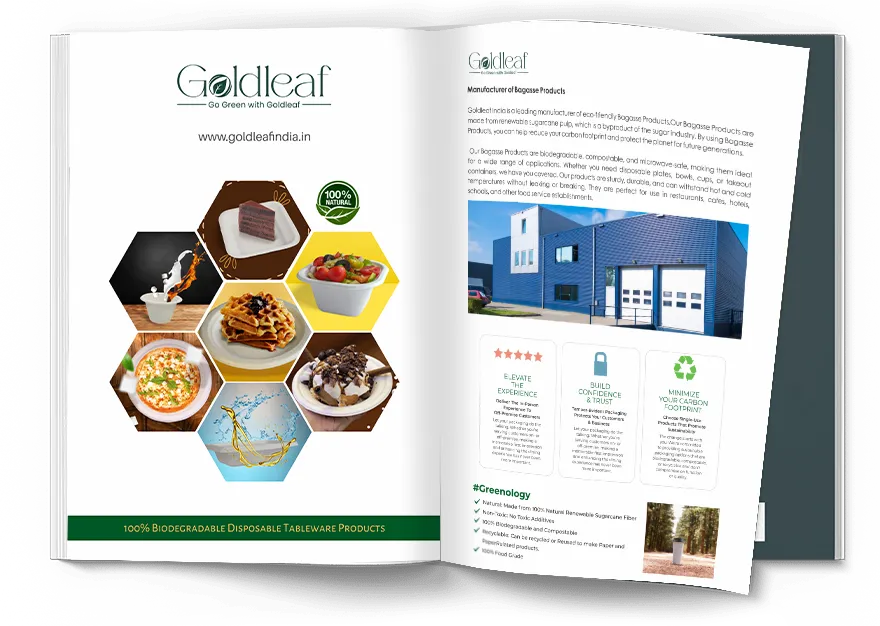Connect With Our Team
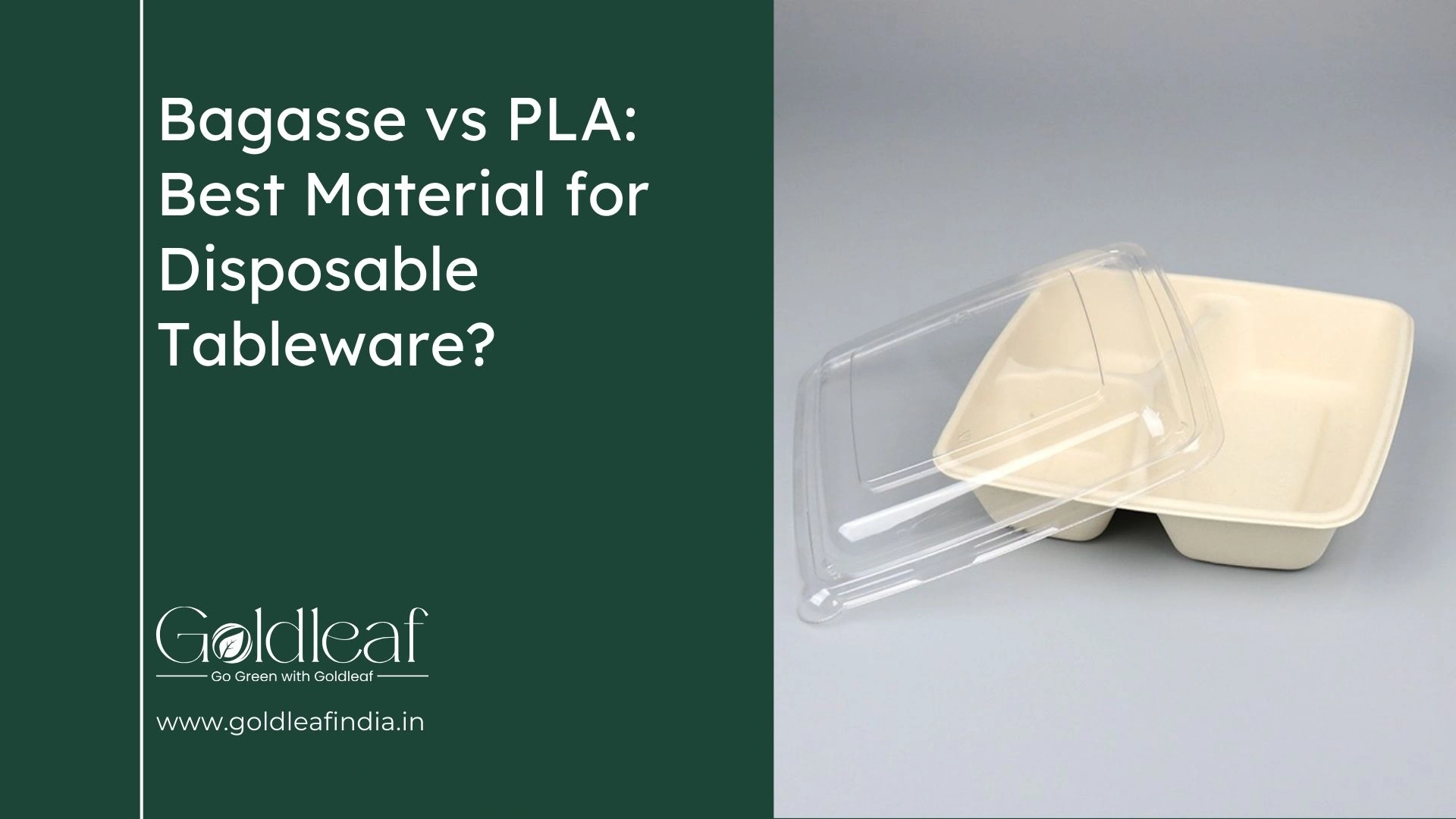
- 2742
Recently the demand for eco-friendly disposable tableware has increased as businesses and consumers aim for sustainability. With plastic waste ruining the environment, Bagasse and PLA (Polylactic Acid) are viable alternatives. Which is the better choice?
In this article we will compare Bagasse and PLA in environmental impact, usability, cost, and industry adoption to choose one of the two materials based on which is more suitable for disposable tableware.
What is Bagasse?
This is a byproduct of sugarcane processing. From sugarcane juice extraction, the leftover fibrous material can be used to produce biodegradable and compostable products. Transforming the packages, plates, bowls, and food containers of the waste from that agricultural process into a sustainable alternative to plastic.
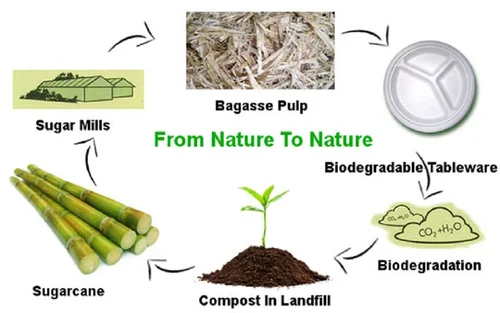
Key Features of Bagasse:
• Eco-Friendly & Biodegradable: Made from renewable sugarcane waste, it decomposes naturally within 60 – 90 days.
• Durable & Heat-Resistant: Can be used in the microwave and oven, and in temperatures up to 200°F (93°C).
• Oil & Water Resistant: Resist grease and liquids, perfect for food packaging.
• Sturdy & Strong: Offers structural integrity similar to traditional plastic but without environmental harm.
• Cost-Effective: Affordable alternative to traditional plastic disposables.
What is PLA (Polylactic Acid)?
Bioplastic PLA is made from renewable resources such as cornstarch or cavassa. PLA is regarded as compostable under industrial conditions, unlike traditional petroleum-based plastics. It is versatile and is commonly used for cups, cutlery, and packaging films.
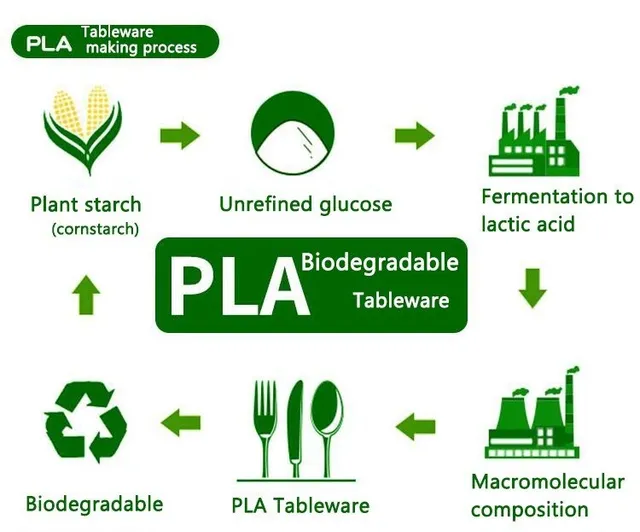
Key Features of PLA:
• Plant-Based & Renewable: Created from corn or cavassa, instead of fossil fuels.
• Biodegradable (Under Specific Conditions): Requires high temperatures (above 140°F/60°C) and industrial composting for breakdown.
• Clear & Lightweight: Generally used for clear as well as transparent food packaging and also for cold drink cups.
• Smooth Surface & Leak-Proof: Provides a sleek finish and excellent barrier properties.
• Lower Heat Resistance: Softens below 105°F (40 °C), making it unacceptable for hot foods and beverages.
Which One is the Best Choice?
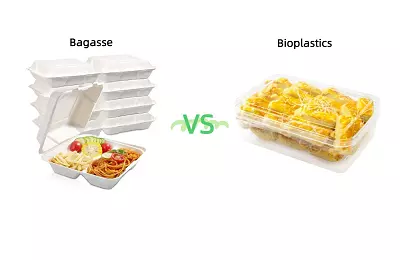
1. Sustainability and Raw Material Sourcing
Bagasse: Bagasse is the sugarcane waste by product utilised by the sugar industry as a highly sustainable and renewable resource. It is a reuse of agricultural waste, thus decreasing the need for further raw material cultivation.
PLA: Made from fermented plant starches, typically corn or cavassa, PLA production requires dedicated agricultural land, water, and energy. This raises concerns about resource allocation and potential competition with food crops.
Winner: Bagasse
2. Biodegradability and Composting
Bagasse: Bagasse degrades in 30 – 90 days in composting conditions. Efficiently break down at home or industrial composting, leaving no harmful residues for the soil to return nutrients.
PLA: On the other hand, although marketed as compostable, PLA needs to be sent to industrial composting facilities with exact temperature and microbial conditions. In conventional landfill or home composting, it can take years to break down, often behaving like conventional plastic.
Winner: Bagasse
3. Strength & Durability
Bagasse: Bagasse is a highly durable and sturdy material that is perfect for food takeout and hot foods. The reinforced strength that does not bend or break underweight comes from its fibrous composition. It won’t lose shape to dense foods like meats, curries, and pasta.
PLA: PLA is known to be brittle and prone to cracking especially in cutting boards and in dishes. Although it looks like plastic, plastic weighs much more and is much less flexible to use for heavy duty food service. When it comes to pressure, PLA cutlery can snap, and the plates can warp or break under heat.
Winner: Bagasse
3. Heat Resistance and Performance
Bagasse: Bagasse is heat resistant and withstands high temperatures so hot and greasy foods will not warp or melt. Still very sturdy even when used with soup, curry or fried dishes.
PLA: Has lower heat resistance and can deform above 50°C (122°F). Its usability for hot foods and beverages is limited by this.
Winner: Bagasse
4. Environmental Impact
Bagasse: It is an agricultural by-product that also has minimal environmental impact during production. It also provides an ecology that works in a circular economy using waste.
PLA: While from a bioresource, PLA production uses chemical processing as well as high water and high energy use. It also leads to microplastic pollution when PLA is not disposed of properly.
Winner: Bagasse
5. Cost-Effectiveness
Bagasse: More affordable due to its abundance and simple manufacturing process. Bagasse Products Widely available, it provides the business and consumer with a cost effective alternative.
PLA: Generally more expensive due to its complex production and the need for specialized composting infrastructure.
Winner: Bagasse
Bagasse vs PLA: A Detailed Comparison
| Feature | Bagasse | PLA |
| Material Source | Sugarcane fiber (byproduct) | Corn starch or sugarcane-based bioplastic |
| Biodegradability | Naturally decomposes within 30-90 days | Requires industrial composting facilities |
| Heat Resistance | Can withstand temperatures up to 200°F (93°C) | Melts at 110-120°F (43-49°C) |
| Water & Grease Resistance | Highly resistant | Moderate resistance |
| Appearance & Texture | Matte, fibrous texture | Smooth, plastic-like texture |
| Composting Requirements | Home & industrial composting | Industrial composting only |
| Best Uses | Plates, bowls, hot food containers | Cold drink cups, food packaging |
Environmental Impact: Which is More Sustainable?
Bagasse:
• It is made from agricultural waste (sugarcane pulp)
• Fully biodegradable & compostable at home
• Less reliance on trees & synthetic plastics
PLA:
• Derived from renewable crops, but requires farmland
• Only compostable in industrial facilities
• May contribute to food supply concerns due to corn usage
Verdict: Bagasse is more environmentally friendly because it decomposes faster and doesn’t require special composting conditions.
Which is the Best Choice for Disposable Tableware?
| Category | Best Choice |
| Eco-Friendliness | Bagasse |
| Hot & Cold Food Resistance | Bagasse |
| Biodegradability | Bagasse |
| Cost-Effectiveness | Bagasse |
Final Verdict: Bagasse is the best material for disposable tableware if you’re looking for heat resistance, eco-friendliness, and affordability.
Choose Premium Bagasse Products
Conclusion
While bagasse and PLA do have sustainable alternatives to plastic, they are both the better casting material depending on the specific requirements. Bagasse stands out for its natural durability, heat resistance, and compostability, therefore it’s suitable for sturdy plates, bowls and trays. On the other hand, PLA is good for clear packaging and cold applications, but needs industrial composting to dispose of it properly.
Bagasse is the superior choice for hot foods, eco friendliness and versatility. Yet, if clarity and cold use are priorities, PLA is a strong contender. Finally, your particular usage, disposal options, and sustainability goals will determine which material is best for you.
For high-quality, sustainable disposable tableware, explore Goldleaf’s collection and make an eco-conscious choice today!
- Products
- Bowl
- Clamshell
- Compartment Plate
- Plate
- Tea Cup
© 2024 , Goldleaf ,
All rights reserved.
Made & Managed by Lightlink Solutions



